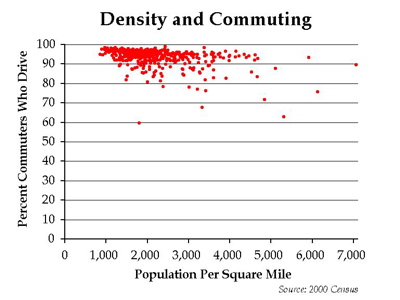In an earlier post, I mentioned that density increases congestion and was chastised for failing to prove it. So here is the evidence.
Start with data from the 2000 census that compares the percentage of commuters who drive to work with the population density of nearly 400 urbanized areas (areas with more than 50,000 people). If density reduced congestion, then increased densities would greatly reduce auto commuting.








